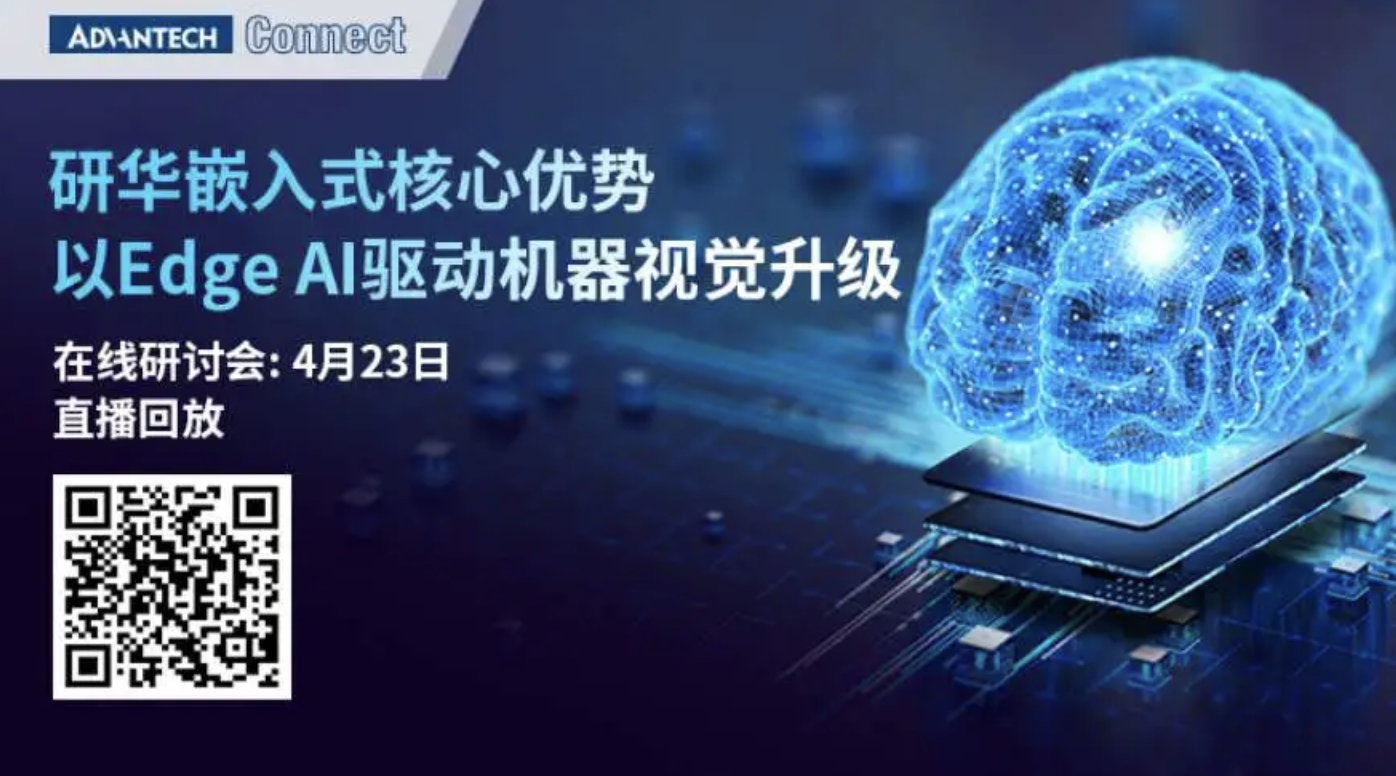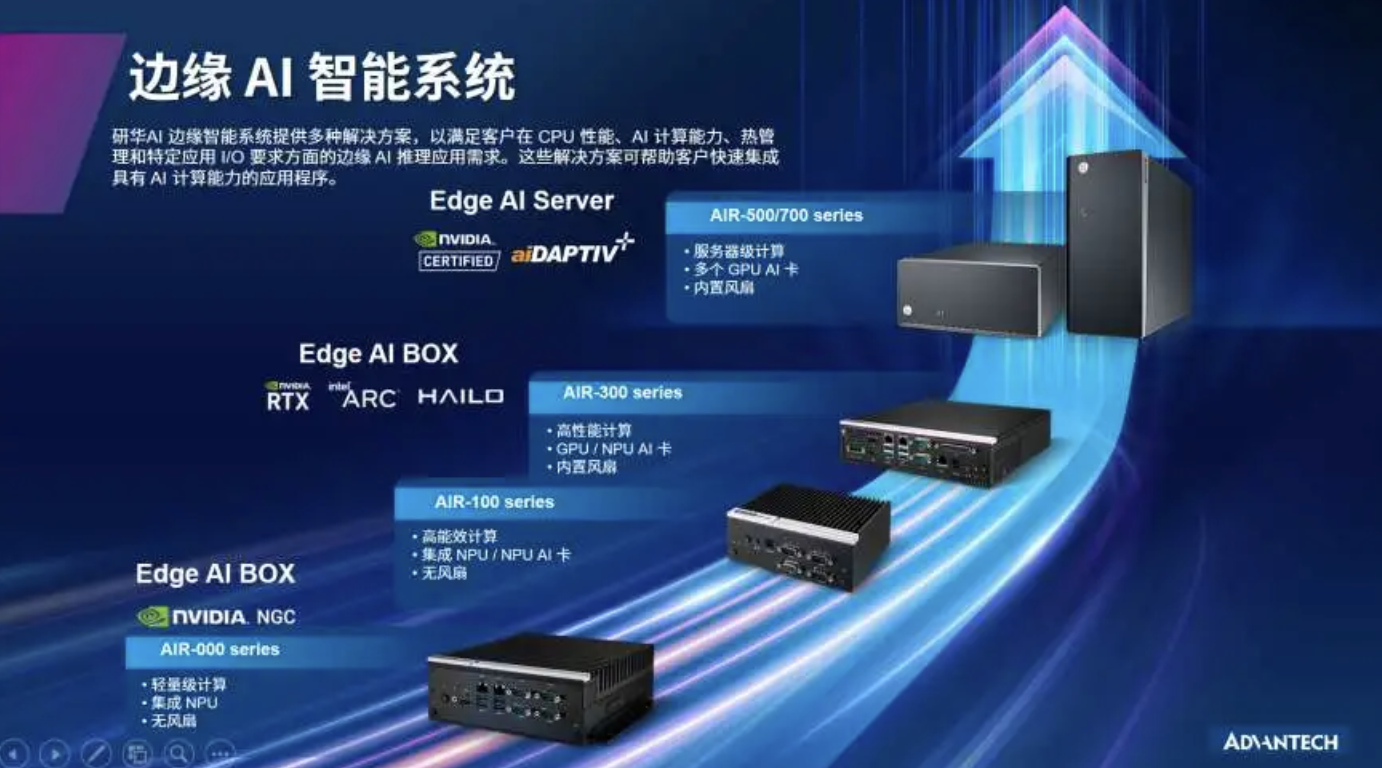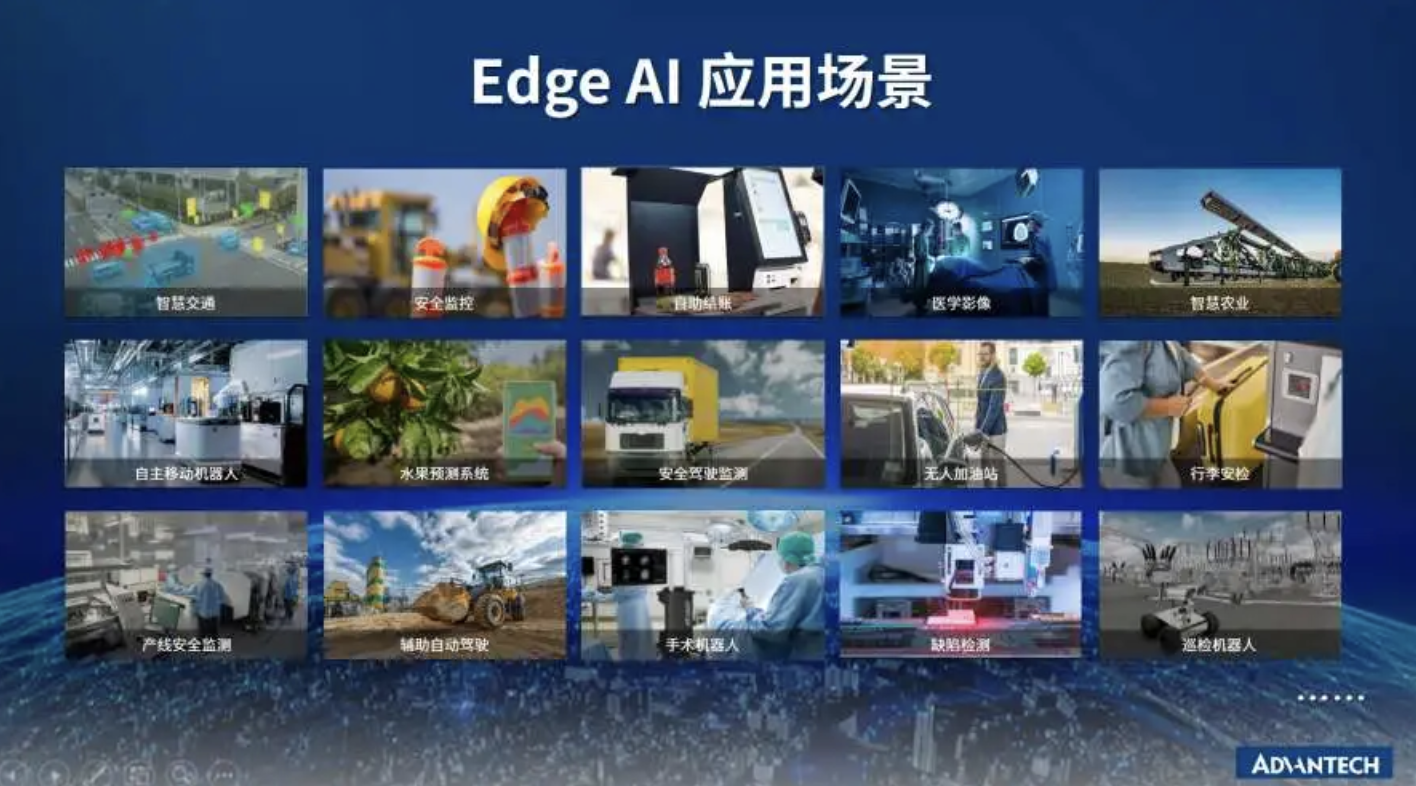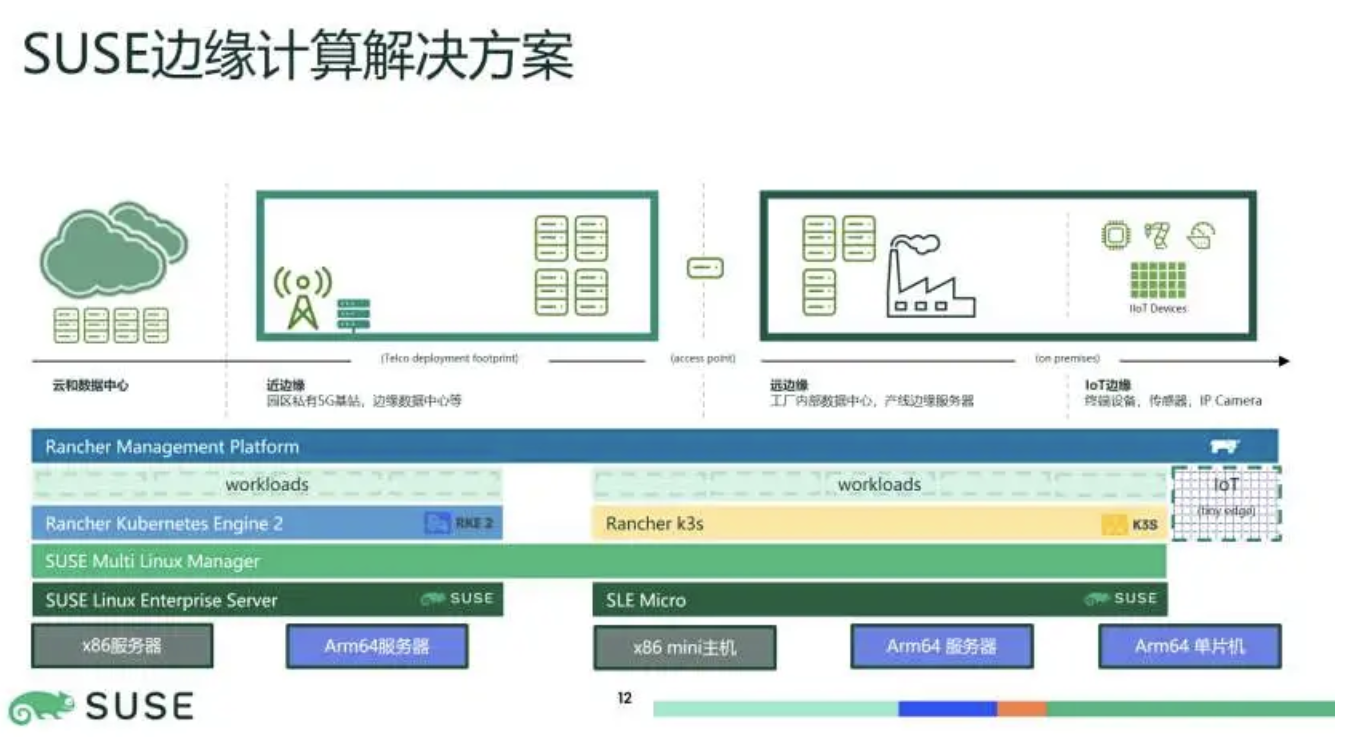Advantech's 'Embedded Edge AI Seminar' Concludes Successfully, Highlighting the Growing Momentum of Edge AI
![]() 04/25 2025
04/25 2025
![]() 388
388
With rapid technological advancements and dynamic industry developments, the growth of edge computing has surpassed all expectations. From the general trend of edge computing to the widespread adoption of edge AI, the smart integration of edge computing and artificial intelligence with embedded systems as the core platform is permeating various industries. This fusion is offering fresh perspectives and infusing new energy into industrial transformations across domains such as industrial automation, smart transportation, autonomous driving, and medical health. Edge AI is igniting a novel wave of empowerment!

On April 23, 2025, Advantech, a global leader in embedded computing solutions, successfully concluded its online seminar on embedded edge AI. The seminar was themed "Advantech's Embedded Core Advantages, Driving Machine Vision Upgrades with Edge AI," aiming to foster exchanges and collaborations within the embedded edge AI industry.
In 2025, edge AI has achieved significant breakthroughs in technological innovation, application scenarios, and industry penetration. According to IDG data, the global market size of the edge AI industry is projected to exceed $100 billion in 2025, with a compound annual growth rate of 20%-25%. The rapid evolution of edge AI has profoundly altered people's understanding of it. Ju Jian, the event host and senior product manager of Advantech's embedded systems, remarked, "Today, the focus is not on whether to implement edge AI or how to do it, but rather on maximizing its effectiveness in reducing latency, enhancing energy efficiency, and safeguarding privacy."
Management Solution for Algorithms and Application Containers in the Era of Edge AI
The exponential growth of IoT devices and the continuous advancement of AI technology have merged deeply, propelling edge AI to become a cornerstone infrastructure in areas like Industry 4.0 and smart cities. It is anticipated that by 2026, 70% of edge AI projects will rely on a unified management platform. However, the industry still grapples with challenges such as the complex management of heterogeneous devices, high barriers for AI algorithm development, limited resources, and unstable networks. Traditional solutions rely on closed systems and dedicated hardware, leading to high integration costs and fragmented ecosystems. There is an urgent need for an open and flexible technical foundation to facilitate cloud-edge-end collaboration and intelligent upgrades. As a special guest, the CEO of Zhongke Haiwei (Beijing) Technology Co., Ltd. systematically introduced the technical architecture, core advantages, and application results of the company's flagship product, the SeawayEdge edge computing operating system. The presentation centered on the theme "Management Solution for Algorithms and Application Containers in the Era of Edge AI," attracting significant attention from participating experts and industry clients.
The SeawayEdge edge computing container management solution is built around the SeawayEdge edge computing operating system, combined with the SeawayKeeper container cloud platform and SeawayFaaS algorithm store, to form a comprehensive solution covering various scenarios. The original objective of SeawayEdge's development was to address two major pain points in the edge computing domain: integrating heterogeneous device computing power and ensuring high real-time performance. The integrated edge container deployment and management capabilities of SeawayEdge can significantly optimize the development, deployment, and operational efficiency of edge AI algorithm applications.

The guest elaborated that SeawayEdge boasts four core advantages. Firstly, it is open and compatible, featuring software and hardware decoupling and extensive hardware adaptability, capable of accommodating mainstream AI chips and supporting popular multimedia and industrial protocols. Secondly, it is rich in algorithms. SeawayEdge offers over 50 AI algorithms, suitable for multiple industry scenarios, enabling flexible arrangement and combination of multiple algorithms and real-time parallel analysis of multiple video streams. Thirdly, it simplifies operation and maintenance. SeawayEdge can be rapidly deployed with a single click within 5-10 minutes and supports remote operation and maintenance through intelligent monitoring. Fourthly, it is cost-effective. SeawayEdge boasts a short construction cycle and enables swift verification and optimization.
In terms of platform functionality, SeawayEdge currently offers seven key features, including software and hardware decoupling, peripheral device management, algorithm application, monitoring and early warning, system monitoring dashboard, private image management and deployment, and optimized deployment solutions. Among these, software and hardware decoupling ensures broad compatibility, batch deployment, automated management, efficient reuse, and rapid iteration. The ready-to-use algorithm store provides a diverse range of algorithm options, while private image management and deployment significantly streamline the user's deployment process.
In terms of scenario implementation, the guest demonstrated the industry empowerment value of SeawayEdge through real-world case studies. In work safety supervision, SeawayEdge supports flexible project configuration methods and tools for the same project, saving configuration resource deployment time and reducing configuration error rates. In the pavement distress detection system, SeawayEdge can save over 50% of related costs, support inspection at 100KM/h (900% higher than traditional inspection), and resolve subjective issues such as work errors during manual inspections, thereby enhancing inspection quality. In the logistics industry, SeawayEdge offers intelligent logistics loading and unloading supervision solutions to optimize logistics processes, reduce costs, and improve efficiency.
Advantech's Edge AI Industrial Computer Solutions
Amidst the wave of industrial intelligent transformation, industrial computers, as the core platform for edge AI, have emerged as a crucial infrastructure driving efficiency innovation and intelligent upgrades in manufacturing through computing power decentralization, real-time response, and scenario adaptability. Advantech is a seasoned veteran in the industrial computer field and a rising star in edge AI industrial computers. Sun Yan, the edge computing product manager of Advantech's Embedded IoT Business Group, presented a talk titled "Advantech's Edge AI Industrial Computer Solutions."

In the realm of artificial intelligence, AI propels edge computing to achieve diverse industrial applications. In terms of reducing resource input, AI handles redundant or repetitive tasks, allowing human resources to focus on more strategic roles. In data processing, AI can enhance decision-making accuracy and aid in identifying opportunities to drive innovation. Simultaneously, AI offers faster responses and superior personalized services. Advantech's edge AI industrial computer solutions bridge technology and applications, leveraging standardized platforms, comprehensive technologies, and open ecosystems to help partners achieve rapid deployment and minimize upgrade efforts. This unlocks more possibilities at the edge and creates greater value in conjunction with partners' ecosystems.
To assist customers in making more precise predictions and decisions in production and operation, Advantech leverages AI + industry applications to spearhead the intelligent upgrade of edge computing. It provides various solutions and core products for edge AI intelligent systems, such as the AIR series products in the Edge AI BOX. This is a high-performance edge AI inference system designed for industrial scenarios, particularly for real-time data processing and intelligent analysis in harsh environments. With "high-performance computing + industrial-grade stability" at its core, this product has become the cornerstone of edge intelligence in domains like smart manufacturing, logistics, and semiconductors. Its integrated software and hardware design not only addresses the flexibility and efficiency bottlenecks of traditional industrial vision systems but also facilitates the evolution of AIoT technology from single-point experiments to full-field penetration through an open ecosystem.
The efficient application of edge AI necessitates both high-quality hardware support and high-performance software drivers. Advantech excels not only in edge AI hardware but also timely launches software toolkits that facilitate AI development, such as the Edge AI SDK for AI inference. This not only provides a benchmark for artificial intelligence performance but is also compatible with AI SoC software SDKs. Additionally, there is the LLM fine-tuning toolkit - GenAI Studio, which supports popular LLM models like Llama-3, Codellama, and Deepseek, and also includes quantization functions for AI inference.

Advantech's edge AI has been applied in numerous scenarios. The presentation showcased the utilization of Advantech's Edge AI in dozens of scenarios, including smart transportation, security surveillance, self-checkout, medical imaging, smart agriculture, AMR, safe driving detection, fruit prediction systems, unmanned gas stations, and baggage security checks. For instance, in fruit prediction systems, Edge AI analyzes climate and soil data to predict fruit maturity and yield, aiding fruit farmers in better planning picking and sales timings. In terms of traffic safety, Edge AI detects drivers' safe behaviors and provides real-time safety advice to prevent traffic accidents.
Enterprise-level AI Development and Operation Services - NVAIE
With the continually expanding application fields of edge AI hardware products, downstream customers' acceptance of these products has significantly increased. However, the edge AI software platform has emerged as a challenging aspect in the implementation of edge AI projects, primarily due to the inability to guarantee the stability and long lifespan of open-source edge AI platforms. At the seminar, an Advantech product manager delivered a speech titled "Enterprise-level AI Development and Operation Services - NVAIE," sharing insights on the stability and long lifespan guarantee of the edge AI software platform.

Advantech's enterprise-level AI development and operation platform, built upon NVIDIA AI Enterprise (NVAIE), deeply integrates NVIDIA-certified systems and full lifecycle management capabilities, providing developers with flexible open-source toolchains. Simultaneously, through an enterprise-specific security branch and automated update mechanism, it ensures framework stability and long-term compatibility. For example, its containerized deployment supports seamless integration with Kubernetes, which not only meets developers' customization needs for the open-source ecosystem but also avoids version fragmentation risks with enterprise-level verification, aiding scenarios like medical image analysis in achieving rapid model iteration.
The core competitiveness of NVAIE lies in its enterprise-level guarantee encompassing the entire "development-training-deployment-operation and maintenance" link. Regarding open-source stability, it employs an open-source component library certified by NVIDIA, combined with automated vulnerability scanning and hotfix technology, to ensure API interface compatibility and long-term availability. On the operation and maintenance front, it offers 7×24-hour cluster monitoring and elastic scaling capabilities, coupled with dynamic resource scheduling algorithms. Full lifecycle management is also evident in cost control, with overall enterprise ownership costs reduced by 50% through hardware and software collaborative optimization.
SUSE Cloud Native, Unlocking the Infinite Possibilities of Edge Computing
Open-source technology provides dual drivers of technology inclusivity and agile innovation for edge AI. Open-source frameworks lower the threshold for deploying AI models on edge devices, enabling enterprises to complete the entire development process from data annotation to model inference without relying on closed-source commercial solutions. Cloud native technology reconstructs the engineering paradigm of edge AI through elastic resource scheduling and intelligent operation and maintenance. The fusion of open source and cloud native is breaking through the bottlenecks in the implementation of edge AI. Open source offers freedom in technology selection, while cloud native reduces complexity through standardized toolchains. Guo Jianxia, an edge computing expert from SUSE, shared the theme "SUSE Cloud Native, Unlocking the Infinite Possibilities of Edge Computing." During the speech, the guest introduced the SUSE Edge 3.2 architecture in detail and shared corresponding application cases.

The SUSE Edge 3.2 architecture is centered on modular design, supporting elastic expansion from standalone devices to distributed clusters. This architecture innovatively integrates the lightweight Kubernetes distribution SUSE Rancher with the AI inference engine, enabling millisecond-level response on resource-constrained edge nodes while achieving seamless collaboration across clouds, edges, and ends through a unified management platform. For example, Danelec adopted SUSE Edge to innovate in the shipping industry, utilizing k8s to provide new edge computing solutions. This saved 75% of the time and effort required to establish a basic environment compared to competitors, enhancing data processing capabilities, optimizing ship operations, and significantly reducing monthly costs per installation.
SUSE Edge is not only extensively utilized in the industrial sector but has also demonstrated impressive application outcomes in the retail industry. Its "hybrid cloud + edge node" architecture enables the deployment of store-level AI applications. For instance, a supermarket chain employs the SUSE edge intelligence solution to accomplish shelf image recognition and inventory synchronization on local nodes, thereby enhancing replenishment efficiency by 50%. Additionally, it ensures that the transaction system remains operational throughout the year through hybrid cloud disaster recovery mechanisms.
The successful hosting of Advantech's seminar, titled "Embedded Core Advantages, Driving Machine Vision Upgrades with Edge AI," has undoubtedly provided a fresh impetus to the growth of the embedded edge AI industry. This event not only fostered exchanges and collaboration within the industry but also presented valuable cooperation opportunities for enterprises and academia. Looking ahead, we anticipate witnessing more innovations and breakthroughs, ultimately achieving greater milestones in the realm of embedded edge AI.






